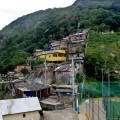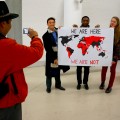REDD+ Focuses on Landscape, Not Just Forests
Gab Donohue | December 7, 2012.

Use of REDD+ scheme challenged as experts call for new approach to managing land and tackling climate change in place of accepted REDD+ schemes.
Reducing Emissions from Deforestation and Forest Degradation, REDD+ for short is an interim platform offering financial incentives for developing countries to reduce emissions from forested land.
Scientists have pointed to the rising dangers of forest degradation; currently the second largest anthropogenic source of CO2 while criticising the ability of REDD+ to change the situation. At present, 13 million hectares of forests are being lost each year and Leaf.org say that as much as two-thirds of the worlds forests are now considered degraded.
Peter Holmgren, director general of the Centre for International Forestry Research (CIFOR) announced that “it is time to look at new ways of solving old problems.”
“Forests and forestry must be looked at through the lenses of agriculture, food security and broader sustainable development. It is time for forestry to come out of the forest and contribute more broadly.”
Scientists are now hailing a landscape-based approach, which looks at the synergies and trade-offs of managing a broad resource mix and encourages a concerted effort to bring together the agricultural, forestry, energy and fishery sectors to better manage climate change mitigation.
“What happens in forests has an impact on water quality and quantity. What happens to water has an impact on agricultural productivity. What happens to agricultural productivity has an impact on how much forest is removed from that landscape,” said Louis Verchot, principal scientist at CIFOR.
“For example, we have groups that deal with forests and groups that deal with agriculture and that’s not productive. We have to bring them all together in landscapes in an integrated way to make them useful to each other.”
Many also expressed hope that they would be able to strengthen the role of landscapes and forestry at next year’s round of climate talks. So far, negotiations in Doha this week have seen a difficult impasse emerge on verifying REDD+ targets. Experts say more technical details are needed now and in the future. This also means more cross-sectoral communication between developing and industrialised nations.
Forest Day runs alongside the official negotiations was initially created to forestall forest degradation and ensure forests were incorporated into climate adaptation and mitigation policies. However with discourse evolving, it is clear that leveraging accumulated experience from both agriculture and forestry communities is now necessary. Forest Day will now be known as Landscape Day to reflect this change.
By Gabrielle Donohue, photo by Laura Owsianka.












comment